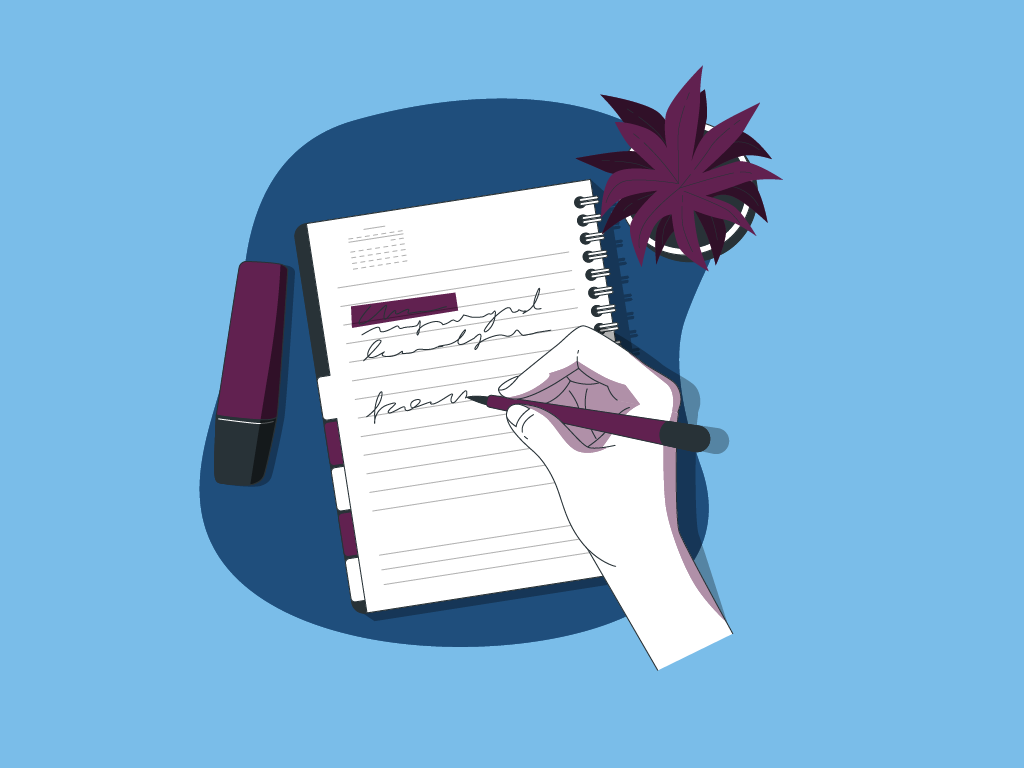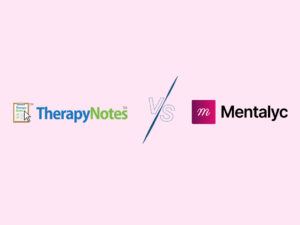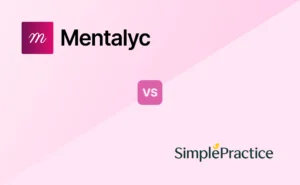Clinical notes are part of everyday practice in mental health settings. Each entry records what was observed, discussed, and addressed in session with the client. These notes support accurate documentation. They also guide the next steps in client care. As a therapist, clear writing ensures that nothing important is missed.
This article explains how to write clinical notes in a structured way including best practices to guide your note-taking. Several key elements and commonly used note formats are covered in detail. The goal is to improve accuracy while keeping the process simple. You can use these examples to improve your daily documentation.
The Importance of Clinical Notes
Clinical notes serve many purposes beyond record-keeping. They support both client care and professional accountability. Understanding their value can help improve how they are written. Here is why clinical note matters:
- Reviewing previous notes helps maintain focus and direction in therapy.
- Key facts and client responses are easier to recall.
- Progress becomes easier to track over multiple sessions.
- Treatment changes are based on what has been tried and observed.
- Therapists can check what is effective and what needs to change.
- Other care providers can access the information they need to stay aligned.
- Each provider stays updated on the client’s progress and history.
- Clinical decisions are easier to explain during supervision or audit.
- Clear documentation supports billing and makes reimbursement possible.
- Structured notes reduce the chance of missing important information.
- Written records offer protection in the event of legal concerns.
What Makes a Good Clinical Note?
For a good clinical note, here are key qualities to keep in mind:

New! Transfer your notes to EHR with a single click. No more copy-pasting.
| Category | Guideline |
|---|---|
| Clarity | Use simple, clear words in your clinical notes. Avoid adding jargon or vague terms. Ensure the note is easy to read. |
| Accuracy and Objectivity | Record only what was observed or said. Leave out personal opinions unless clearly stated. Focus on facts. Stay neutral and objective. |
| Specificity | Use direct quotes when needed. Describe behaviors or symptoms clearly. Avoid general terms like “felt sad.” Write what the client reported. |
| Timeliness and Structure | Write notes immediately after the session. Ensure to use a consistent format throughout. Stay organized from the beginning to the end of the note. |
| Confidentiality | Keep your client information secure. Follow privacy and ethical standards. Do not include identifying details outside required sections. |
Clinical Notes Best Practices
There are best ways to write clinical notes. The following tips will help a therapist create clear and complete notes:
- Remain Consistent with the Note Format Use the same format for every note. This makes your writing easy to follow and helps you capture important details.
- Note the Date and Time of Every Entry Always include the date and time of the session. Also, note when the clinical note was written.
- Identify the Client and the Therapist State the client’s name clearly. Then, add your full name and credentials as the therapist.
- Never Lose Focus on the Client’s Story You can use quotes when needed to reflect the client’s experience. For example, instead of writing “Client seemed anxious,” say, “Client stated, ‘I feel my heart racing.’”
- Try Not to Label the Client. Describe Behaviors Instead Avoid clinical labels. Describe what the client said or did. For example: “Client reported sleeping 8 hours a day. He described difficulty concentrating and feelings of hopelessness.”
- Document The Interventions and Client’s Response Write down what you did during the session. Also note how the client responded to those interventions.
- Address Client’s Progress by Measuring Goals Always refer to the client’s goals or treatment plan. Note what has improved or what still needs to be worked on.
- Take Record of Any Risk Factors If the client talks about harm to self or others, write it down. Record signs of abuse if observed. Most importantly, include the steps you took in response.
- Make Plans for Future Sessions Outline the next steps at the end of the note. You can also include homework or topics to return to by the next session.
- Strictly Ensure Confidentiality Keep notes in a safe and secure place. If the notes are stored electronically, then you can use passwords. However, only authorized persons should have access.
- Review and Edit After writing, read through the note. Check for grammar errors and make sure everything is clear.
Commonly Used Clinical Notes with Examples
Here are some common formats of clinical notes and how they are used:
Format 1 – SOAP Notes
The SOAP format is widely used in mental health settings for clinical note-taking. It helps to structure the session into clear sections.
- S – Subjective This section includes what the client says. It covers symptoms, feelings, concerns, and presenting problems. Direct quotes may be used to reflect the client’s exact words.
- O – Objective This section includes what the therapist observes. It may cover appearance, behavior, mood, or results from any assessments.
- A – Assessment This is a summary of the therapist’s clinical judgment. It draws from both the subjective and objective information. It may include a diagnosis or note changes in the client’s progress.
- P – Plan This outlines the next steps. It may include planned interventions, referrals, homework, or goals for the next session.
Example 1: SOAP Note (First Session – Client Presenting with Symptoms of Anxiety)
Name: Walter Beth
DOB: 1 June 2001
Date of Session: 8 June 2025
Time: 1:00 pm – 2:30 pm
Therapist: (Insert Name)
Session Type: First (In-person)
S – Subjective
The client reports “feeling constantly overwhelmed and worried” for the past six months. She stated, “It’s becoming really hard to focus when I am at work. I am unable to relax even when I’m at home.” She reports early morning awakenings around 3 a.m., with racing thoughts about her daily activities. She denies any suicidal ideation or intent to harm others. She also notes increased irritability, especially with her husband.
O – Objective
The client appeared restless and shifted in her seat throughout the session. She maintained fair eye contact but looked away while discussing her sleep difficulties. Speech was occasionally rapid. Her affect appeared stable and did not visibly reflect anxiety. Grooming was appropriate. She wore a white shirt and blue denim shorts. She was cooperative, and responsive. She seemed oriented to time, place, and person.
A – Assessment
Client is a 24-year-old female working as a Customer Specialist. Presenting symptoms are consistent with Generalized Anxiety Disorder (GAD), including persistent worry, sleep disturbance, concentration issues, and irritability. Her symptoms are impairing both work and home life. Insight is present, and motivation for treatment is noted. The client appears to be in psychological distress related to anxiety.
P – Plan
- Continue building rapport
- Provide psychoeducation on anxiety symptoms and the mind-body connection
- Introduce deep breathing as a relaxation technique
- Explore additional stressors contributing to anxiety
- Assign daily practice of deep breathing (minimum 3 times per day)
- Schedule next session for 24 June 2025 to assess coping and continue anxiety-focused interventions
Example 2: SOAP Note (Follow-Up Session – Client Presenting with Symptoms of Depression)
Name: Tyler Kincaid
DOB: 10 December 1989
Date of Session: 10 June 2025
Time: 1:30 pm – 2:30 pm
Therapist: (Insert Name)
Session Type: Second (In-person)
S – Subjective
The client reported slight improvement in mood since the last session. He stated, “There have been a few good days in which I did things I liked.” He now gets out of bed earlier on most mornings. He continues to struggle with low energy but reported walking his dog three times in the past week. He still finds it difficult to eat enough. He denied any thoughts of suicide or self-harm. He said, “I couldn’t try out that coping skill you mentioned because it was hard for me.”
O – Objective
The client appeared less withdrawn than in the previous session. His mood seemed slightly improved. He maintained eye contact throughout the session. Speech was normal in tone and volume. He was neatly dressed in a blue shirt and brown khaki shorts. He showed signs of frustration when discussing the coping skill exercise. There were no visible signs of immediate distress.
A – Assessment
The client is a 35-year-old male presenting with symptoms of Major Depressive Disorder (MDD). He showed some progress in mood and activity level. He has begun re-engaging in daily tasks such as walking his dog. However, he was unable to apply the coping skill introduced in the last session. This area will need further support. He appears safe and stable at this time.
P – Plan
- Explore the challenges he faced with using the coping skill.
- Break the mindfulness exercise into smaller, easier steps.
- Highlight and reinforce his recent progress, including walking his dog.
- Set one small, achievable goal for the new week (e.g. complete one enjoyable activity daily).
- Schedule a follow-up session for 30 June 2025.
- Continue measuring progress and begin addressing cognitive distortions.
Format 2 – DAP Notes
The DAP note is a simple and widely used way to write clinical notes. It helps combine key information into a brief, structured entry.
- D – Data This section includes what the client said and what the therapist observed during the session.
- A – Assessment This is the therapist’s clinical judgment. It may include a working diagnosis or a summary of the client’s current state.
- P – Plan This outlines what the therapist intends to do next to support the client and reduce distress.
Example 1: DAP Note (10-year-old Child Presenting with Behavioral Challenges)
Name: Aiden Schwartz
DOB: 1 June 2015
Date of Session: 12 June 2025
Time: 3:00 pm – 4:30 pm
Therapist: (Insert Name)
Session Type: First (In-person)
D – Data
The client, age 10, presented physically at the clinic accompanied by his mother. The mother reported that “Aiden had another meltdown in school yesterday”. She stated that it involved him throwing his pen and yelling at his teacher when asked to solve a math equation. Aiden stated, “Math is boring and difficult and I hate it!”. During the session, he was at first unwilling to talk. He crossed his hands and scrunched up his face. After about ten minutes, he was seen playing with Legos and attempting to build a plane. He later shared that he feels “very mad” when he doesn’t understand things.
A – Assessment
Aiden presents with oppositional behavior, mostly in academic settings. His responses suggest symptoms linked to Oppositional Defiant Disorder (ODD). He becomes easily frustrated when he feels stuck or confused. His mother is concerned and open to support.
P – Plan
- Continue to build a good relationship with Aiden using play therapy.
- Introduce him to games and activities that are age and/or culture-appropriate. For example, learning to name his feelings using colors, and doing deep breathing exercises.
- Psychoeducate the mother on ODD and introduce ways to use positive reinforcement. Guide her in setting clear, consistent rules at home.
- Establish a reward system, and encourage him to support calm behavior.
- Schedule a follow-up session on 28 June 2025 to review progress and begin social skills training.
Format 3 – BIRP Notes
The BIRP is a structured way to write clinical notes. It is often used because it highlights what the therapist did and how the client responded.
B – Behavior
What are the behaviors you can observe as the therapist?
Or what did the client tell you about their thoughts, feelings, or actions?
I – Intervention
What did you do as the therapist/professional?
What techniques did you use?
R – Response
How did the client respond to the intervention (verbally or nonverbally)?
P – Plan
What are the next steps you intend to take (homework, referral, or goal for the next visit)?
Example 1: BIRP Note (Substance Use Intervention)
Date of Session: 17 June 2025
Time of Session: 1:00 pm – 2:00 pm
Client’s Name: Angie Davis
DOB: 15 March 1993
Therapist: (Insert Name)
Session Type: First (In-person)
B – Behavior
The client reported no alcohol use in the past week. She described having strong cravings on Tuesday night after an argument with her sister but chose not to drink. She attended three AA meetings and found them helpful. She said her sleep has improved, and she feels more energetic. The client stated, “I still get mad easily, but I try to resist the urge to drink because of it.” During the session, we explored ways she can manage cravings. Her effort and decision to stay sober were acknowledged.
I – Intervention
We discussed how to identify personal triggers and reviewed healthy ways to cope with anger. I recommended strategies such as journaling and physical activity. I introduced the HALT tool (Hungry, Angry, Lonely, Tired) as a method for preventing relapse and gave her a pamphlet on it to take home. Together, we avoid events, people, or places that serve as triggers in the future.
R – Response
The client was open to the conversation and actively engaged. She understood the need to recognize and respond to emotional triggers. She contributed her own ideas for managing anger and expressed interest in trying the HALT approach. She showed motivation to remain sober and take more control over her reactions.
P – Plan
- Continue monitoring her sobriety and address emerging challenges.
- Focus on building more effective strategies for managing anger.
- Encourage regular attendance at AA meetings.
- Introduce “urge surfing” and have her list two ways she can manage anger without turning to alcohol.
- Follow-up session scheduled for 24 June 2025.
- Begin work on communication skills during the next session.
Example 2: BIRP Note (Trauma Centered Therapy)
Name: David Sheffield
DOB: 4 August 1979
Date of Session: 18 June 2025
Time: 11:00 am – 12:00 pm
Therapist: (Insert Name)
Session Type: First (In-person)
B – Behavior
The client reported an increase in flashbacks after watching a combat documentary. He described the experience as something that “brought back the dread.” He also reported poor sleep over the last three nights due to nightmares. He shared that he had avoided family and friends, saying he “couldn’t deal with people.” At the start of the session, he appeared quiet and tense.
I – Intervention
I validated the client’s trauma response and offered support. He was taught the 5-4-3-2-1 grounding technique to help reduce distress. We explored the connection between the documentary and his symptoms. I also explained how trauma can affect the body and mind. The session included education on reducing exposure to triggers and how to make use of available social support.
R – Response
The client was withdrawn at the beginning but became more engaged after practicing the grounding exercise. He reported feeling “a little bit present.” He identified specific media triggers and acknowledged that isolation had worsened his mood. He agreed to limit exposure to triggering content and to reach out to at least one supportive person. By the end of the session, he appeared more relaxed and said he felt more open.
P – Plan
- Continue to monitor his trauma symptoms and how they affect his daily functioning.
- Reinforce the use of grounding techniques throughout the week.
- Discuss ways to improve and stabilize his sleep routine.
- Encourage avoidance of triggering media and increased use of support systems.
- Reschedule the next session for 29 June 2025. Focus will shift to understanding trauma responses and building additional relaxation skills.
Conclusion
Clinical notes do more than record events. They reflect clinical thinking, and they show how care is being delivered by the therapist to the client. Each format covered, such as the SOAP, DAP, BIRP notes, offers a structured way to document sessions with clarity and purpose.
To ease the process, Mentalyc provides helpful templates that support daily practice. As an AI-powered note-taking tool, it keeps your notes accurate without taking too much time. It also helps you stay consistent, especially on busy days. With the right tools, documentation becomes more focused and less overwhelming.
Frequently Asked Questions (FAQs)
Are There Any Cultural Considerations In Clinical Notes?
Yes. Cultural background shapes how a client sees their challenges. It also affects how they respond to care. Documenting relevant cultural or religious beliefs shows that context was considered. Avoid pathologizing behaviors rooted in culture. Include client statements that reflect their worldview. It is important to stay mindful of language barriers, and family structure as well. You can always consult cultural guides or seek supervision where necessary. This improves care planning and supports ethical practice. Use tools like Mentalyc to personalize templates and ensure that cultural factors are not missed.
What Is The Importance Of Using Strength-Based Language In Clinical Note-Taking?
Strength-based language highlights the client’s effort, and growth. It shows that therapy is not only about problems. Clients benefit when their resilience is documented. It reinforces motivation. Use phrases like “Client identified triggers” or “Client applied coping strategy.” Avoid labels that reduce the client to a symptom. Track steps forward, even if progress is small. This approach supports recovery and promotes hope.
How Do I Address Errors During Clinical Note-Taking?
Avoid erasing or using correction fluid. Draw a single line through the error. Label it “error.” Write the correct detail clearly beside it. This is crucial for transparency and also for legal purposes. If the note is electronic, make the correction using the platform’s edit or comment feature. Document the reason for the change, especially in sensitive cases. Tools like Mentalyc offer structured templates that reduce the chance of errors. Edits are traceable. This keeps your notes compliant and easy to review.
How Can I Take Clinical Notes During Telehealth Sessions?
Always record that the session took place remotely. Include the platform used (e.g. Zoom, Doxy.me). Note the client’s physical setting. Ensure to confirm that the client was in a private, distraction-free space. Mention any issues—like audio lags, video freezes, or poor connection and how they were resolved. Document if the session was paused or rescheduled. Specify whether informed consent was discussed or reaffirmed. Keep your notes structured and objective.
References
Podder V, Lew V, Ghassemzadeh S. SOAP Notes. [Updated 2023 Aug 28]. In: StatPearls [Internet]. Treasure Island (FL): StatPearls Publishing; 2025 Jan.
Reiter M.D. & Sabo K. (2023). A Therapist’s Guide to Writing in Psychotherapy. Routledge.
Why other mental health professionals love Mentalyc

“Having Mentalyc take away some of the work from me has allowed me to be more present when I’m in session with clients … it took a lot of pressure off.”
LPC

“By the end of the day, usually by the end of the session, I have my documentation done. I have a thorough, comprehensive note … It’s just saving me hours every week.”
CDCII

“It’s so quick and easy to do notes now … I used to stay late two hours to finish my notes. Now it’s a breeze.”
Licensed Professional Counselor

“A lot of my clients love the functionality where I can send them a summary of what we addressed during the session, and they find it very helpful and enlightening.”
Therapist






